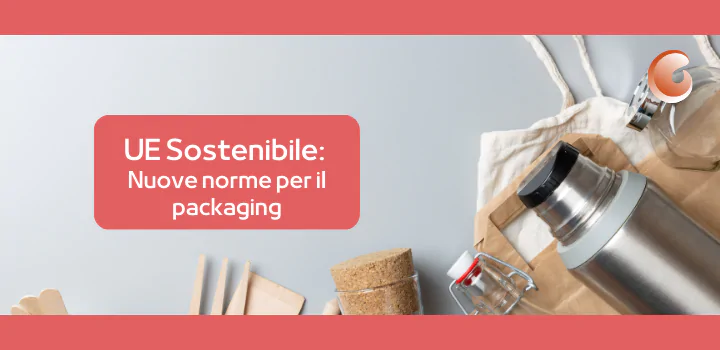
Environmental sustainability has reached a decisive turning point in the European Union. With new EU regulations on the way, the entire packaging sector faces an uncertain future, with impacts that reverberate across the entire value chain, from production to consumption.
The EU's objectives are clear: by 2030, 20% of bevande packaged must be contained in reusable packaging. This is just one of the many measures envisaged, included in the proposal for the new EU regulation which include:
The reform, aimed at favoring reuse of packaging over recycling, raises serious concerns among producers of food and plastic materials. This direction risks being a serious blow to the bagged salad sector, which in Italy is worth over a billion euros. Producers complain about the lack of renewable materials economically sustainable to single-use plastic and fear a cost increase of production which would inevitably be reflected in consumer prices.
La final discussion on the regulation is expected in the plenary sessions of the European Parliament, between 20 and 23 November. Here, the fate of these directives will be decided, which could rewrite the rules of the packaging market.
The European Union's vision for agreener economy translates into challenging numbers for economic operators. According to Assobibe, the association representing the producers of bevnon-alcoholic andes, they will be necessary significant investments to adapt to new regulations. It is estimated that just implementing collection centers and managing container returns would require an initial investment of three billion euros, to which it would be added a billion for the development of an IT bail management system.
The effects of the new regulations, although guided by sustainable intentions, risk being particularly damaging Italy and its small businesses. The National Confederation of Crafts and Small and Medium Enterprises (CNA) underlines how the regulation does not adequately consider national contexts nor the impact on small businesses that make up a large part of the Italian productive fabric. The CNA therefore hopes that the plenary examination will be of value crucial changes, especially regarding reuse targets and bans on single-use packaging, as its use would involve massive use of energy.
Italy, in this context, stands out for having already superato the post-consumer packaging recycling targets set by the EU for 2025, sign of a advanced and efficient material collection and recycling system. But despite these laudable results, small and medium-sized businesses express strong concern about the economic impact of the new directives. They therefore ask for support measures and access to packaging that respects the new standards at affordable prices.
In concrete numbers, plastic production in the EU represents the largest use of oil and gas in the petrochemical sector. In 2020, 38% of gas and 22% of the oil used in the EU came from Russia, underlining a link that the current crisis makes particularly problematic. If the EU could halve the amount of packaging plastic on the market by 2030, reaching a recycling rate of 90%, could significantly reduce gas and oil consumption. More precisely, this would result in savings dthe 6,2 billion cubic meters of gas and 8,7 million tons of oil compared to 2020.
The data speaks clearly: the production of plastic packaging alone requires the consumption of 10 billion cubic meters of fossil gas and 14 million tons of oil, equivalent to Hungary's total methane consumption. With the proposed reduction, the EU could cut by a fifth of fossil fuels used for plastic production, equivalent to one reduction of 4% of industrial consumption of gas fossil fuel in the EU compared to 2020. This reduction in energy needs would not only ease geopolitical tension but would also have the effect of protecting communities and ecosystems more vulnerable, demonstrating European commitment in the fight against the climate crisis.
The EU's upcoming decisions on packaging will significantly influence both the environment and the economy, striking a balance between environmental sustainability and the economic reality of business.
Staff BlogInnovazione.Item: https://www.contatti-energia.it/news/leuropa-svolta-per-imballaggi/
BlogInnovazione.it
Developing fine motor skills through coloring prepares children for more complex skills like writing. To color…
The naval sector is a true global economic power, which has navigated towards a 150 billion market...
Last Monday, the Financial Times announced a deal with OpenAI. FT licenses its world-class journalism…
Millions of people pay for streaming services, paying monthly subscription fees. It is common opinion that you…